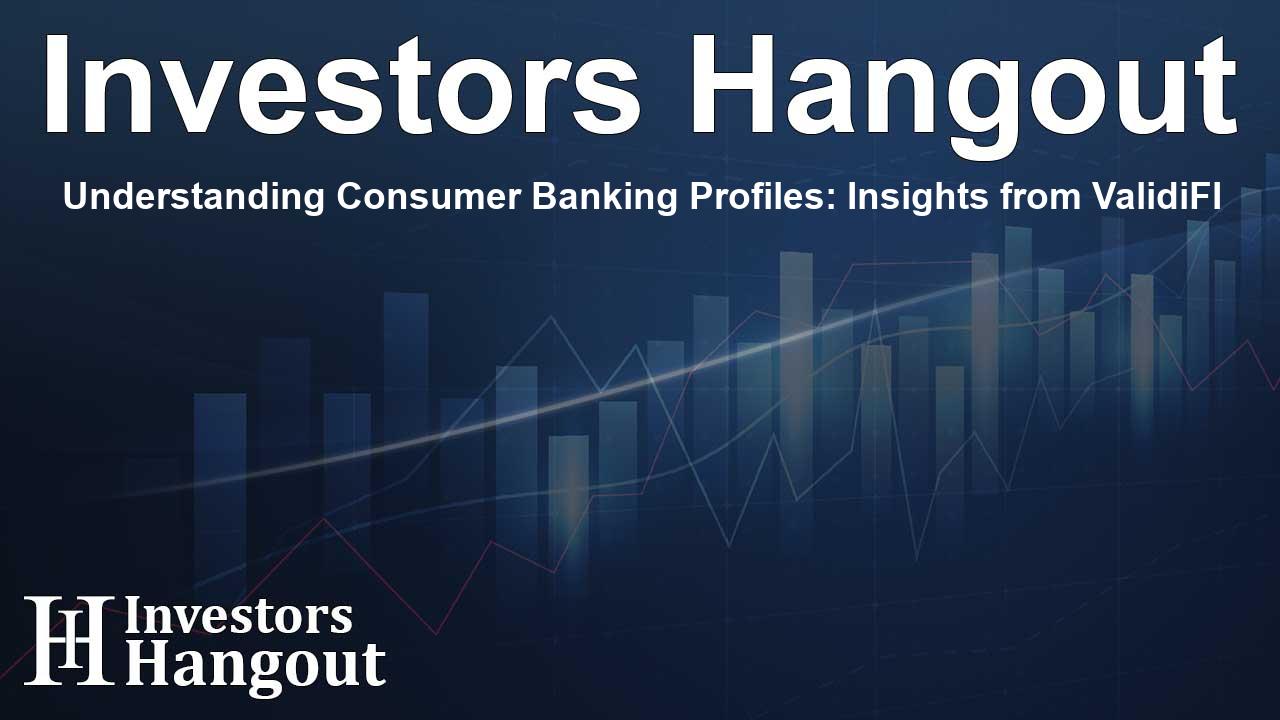Understanding Consumer Banking Profiles: Insights from ValidiFI

Insights into Consumer Banking Profiles
ValidiFI, Inc., a frontrunner in predictive bank account and payment intelligence, has unveiled its latest quarterly report. This report emphasizes the vital need for thorough consumer banking profiles to tackle payment fraud and mitigate transaction risks effectively.
Rising ACH Volumes and Associated Risks
With the rise of Automated Clearing House (ACH) transactions, volumes have surged, with immediate ACH payment transactions exceeding $1 billion in recent years. Consequently, payment processes have become increasingly vulnerable to new risks. ValidiFI's report suggests that traditional verification methods and risk management strategies do not suffice anymore to evaluate payment risks within the current intricate banking ecosystem.
The Importance of Data Layering
John Gordon, CEO of ValidiFI, asserts the importance of integrating accurate data to empower financial institutions (FIs) and service providers. He believes that by incorporating the right data, these organizations can make quick and informed decisions regarding payment approvals. The report underlines that FIs must possess immediate insights into customer banking profiles to better identify potential high-risk clients and activities.
Key Findings in the Report
The report highlights several critical trends and insights:
- High-risk accounts are 3.75 times more likely to incur Non-Sufficient Funds (NSF) compared to lower-risk counterparts.
- Accounts that have had recent NSF events show 2.75 times more NSF occurrences than the typical account.
- High-risk accounts often see only 12% of transactions being successful, contrasting sharply with lower-risk accounts.
- High-risk accounts witness returns on 62.5% of their transactions, while low-risk accounts experience returns at just 5%.
Consumer Banking Behavior Patterns
Noteworthy patterns emerge from ValidiFI's extensive data network, which indicates that consumers often hold multiple bank accounts. This includes a mix of traditional and non-traditional banking accounts. The latest report explores different banking behavior patterns across various types of financial institutions including traditional banks, credit unions, and neobanks. It points out a significant preference for neobanks among high-risk consumers, with 32% of their banking relationships tied to these entities. In comparison, low-risk consumers hold only 4% of their accounts with neobanks.
Indicators of Potential Fraud
In addition to analyzing banking behaviors, ValidiFI's study delineates various signs associated with high fraud risk. Accounts belonging to high-risk individuals often show a pattern of multiple phone numbers, email addresses, and social security numbers (SSNs). The data indicates concerning patterns, such as accounts linked to more than 12 inquiries in a month, 5 unique SSNs, 4 or more email addresses, and 6 or more phone numbers.
Enhancing Account Authentication
The report culminates with four strategic recommendations for organizations to enhance their account authentication processes. These actionable steps leverage ValidiFI’s advanced solutions for constructing multi-dimensional, predictive consumer banking profiles, ultimately leading to more secure financial transactions.
Frequently Asked Questions
1. What is the focus of ValidiFI's latest report?
The latest report focuses on the importance of comprehensive consumer banking profiles for mitigating payment fraud and transaction risks.
2. How has the rise in ACH transactions influenced payment risks?
As ACH transactions grow, they become increasingly susceptible to risks, necessitating more advanced verification and risk assessment methods.
3. What are the key findings about high-risk accounts?
High-risk accounts face more frequent NSF occurrences, and successful transaction rates are significantly lower compared to low-risk accounts.
4. What kinds of banking behaviors do high-risk consumers exhibit?
High-risk consumers are more inclined to use neobanks, which are linked to lower payment success rates compared to traditional banking institutions.
5. How can organizations improve their fraud detection processes?
Organizations can enhance their fraud detection by adopting ValidiFI’s solutions to develop comprehensive consumer banking profiles.
About The Author
Contact Olivia Taylor privately here. Or send an email with ATTN: Olivia Taylor as the subject to contact@investorshangout.com.
About Investors Hangout
Investors Hangout is a leading online stock forum for financial discussion and learning, offering a wide range of free tools and resources. It draws in traders of all levels, who exchange market knowledge, investigate trading tactics, and keep an eye on industry developments in real time. Featuring financial articles, stock message boards, quotes, charts, company profiles, and live news updates. Through cooperative learning and a wealth of informational resources, it helps users from novices creating their first portfolios to experts honing their techniques. Join Investors Hangout today: https://investorshangout.com/
The content of this article is based on factual, publicly available information and does not represent legal, financial, or investment advice. Investors Hangout does not offer financial advice, and the author is not a licensed financial advisor. Consult a qualified advisor before making any financial or investment decisions based on this article. This article should not be considered advice to purchase, sell, or hold any securities or other investments. If any of the material provided here is inaccurate, please contact us for corrections.
